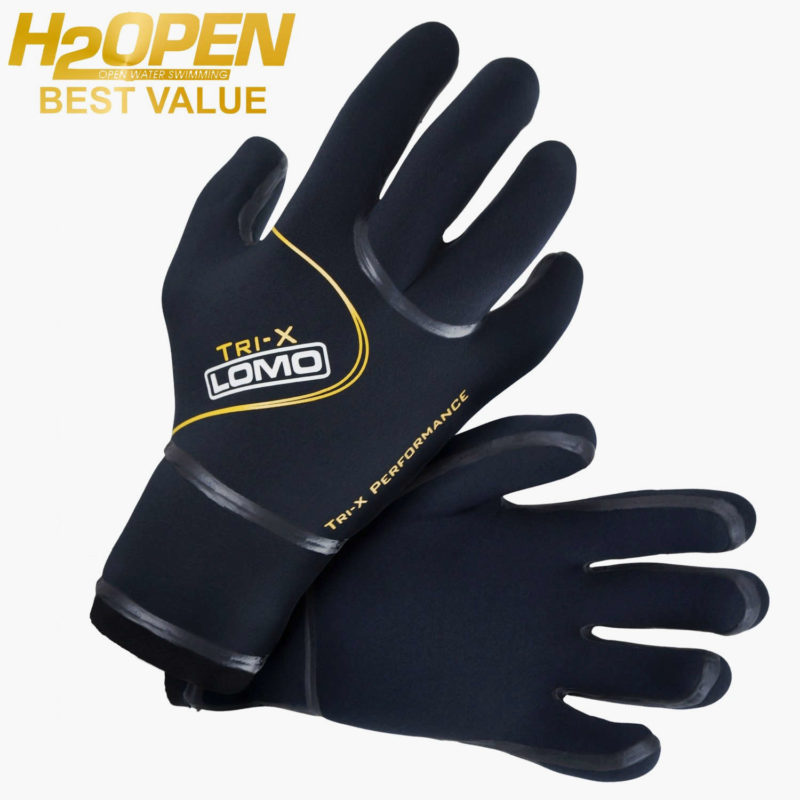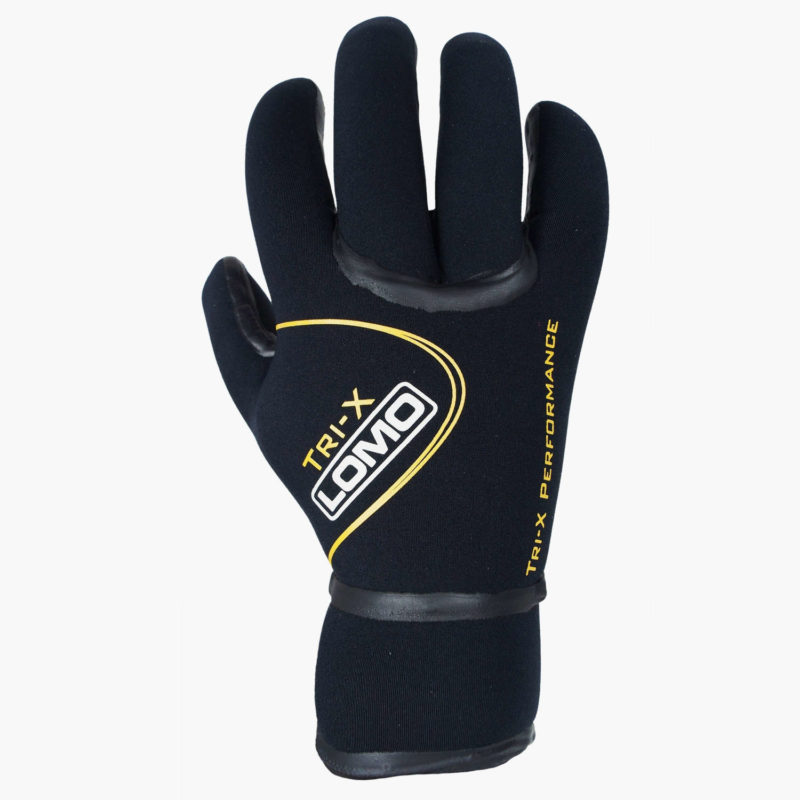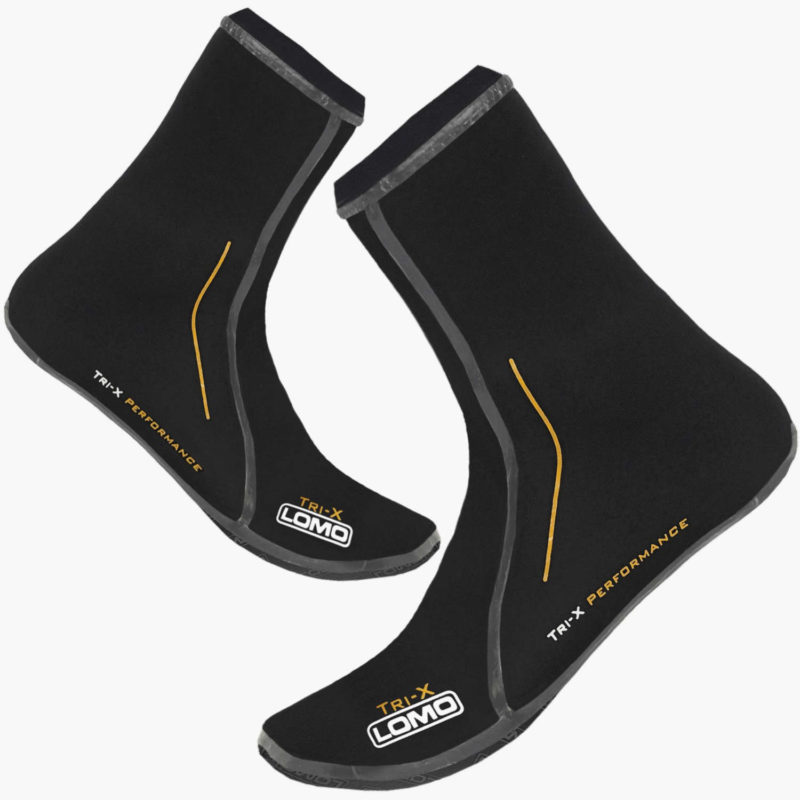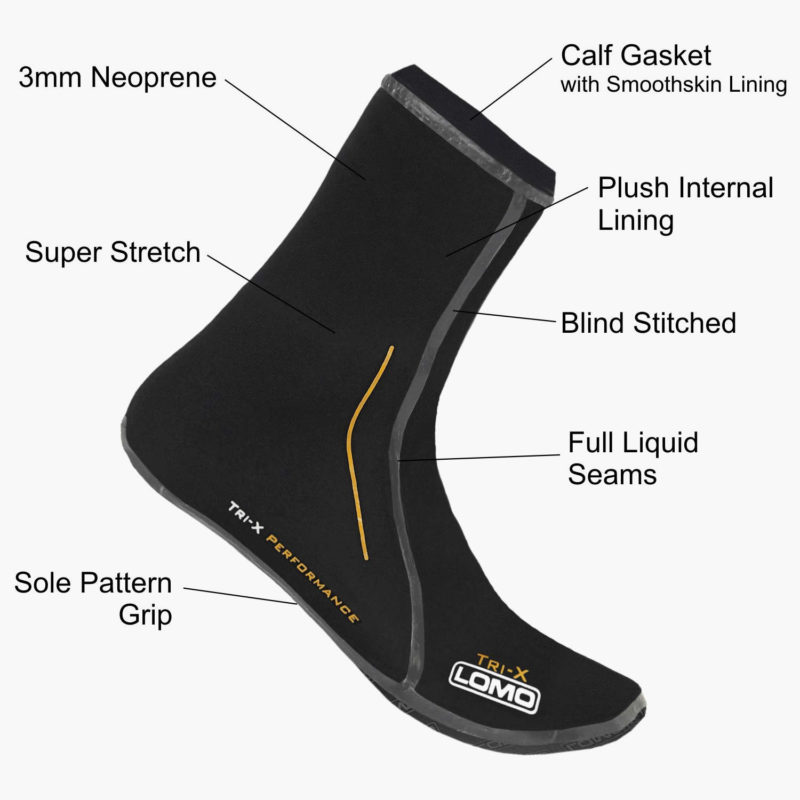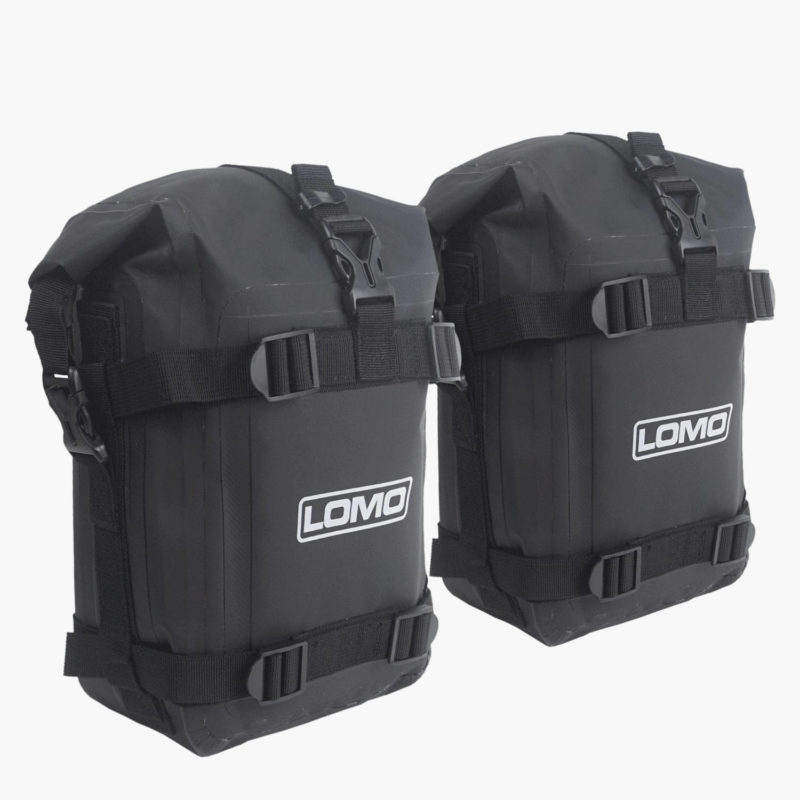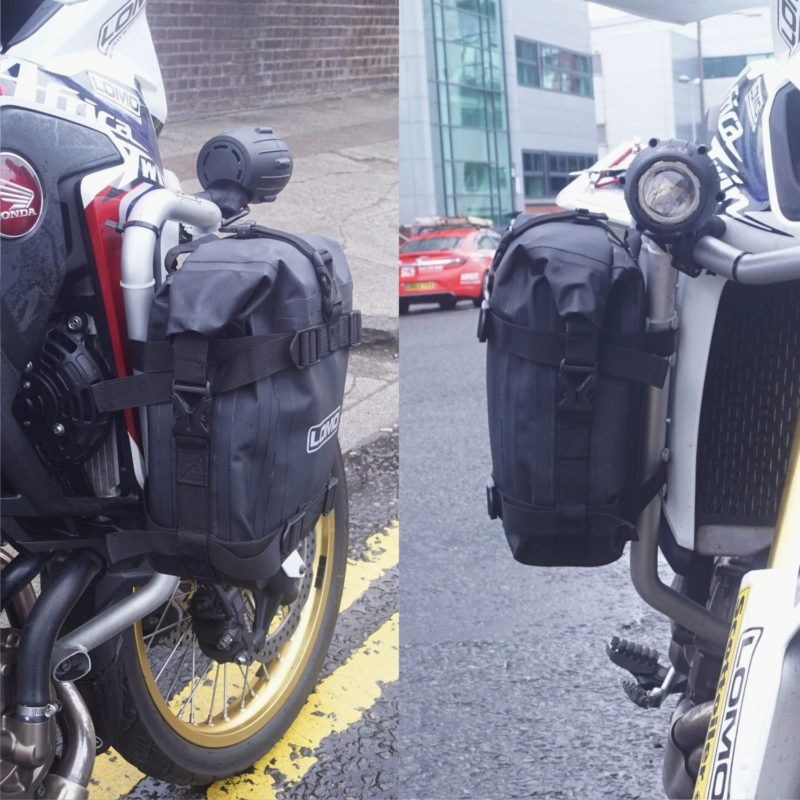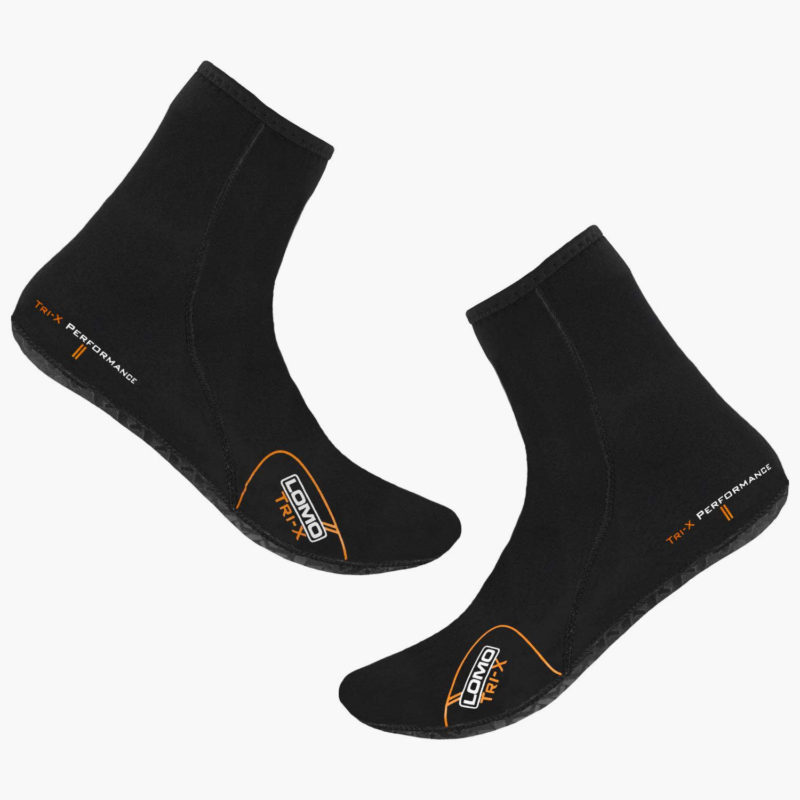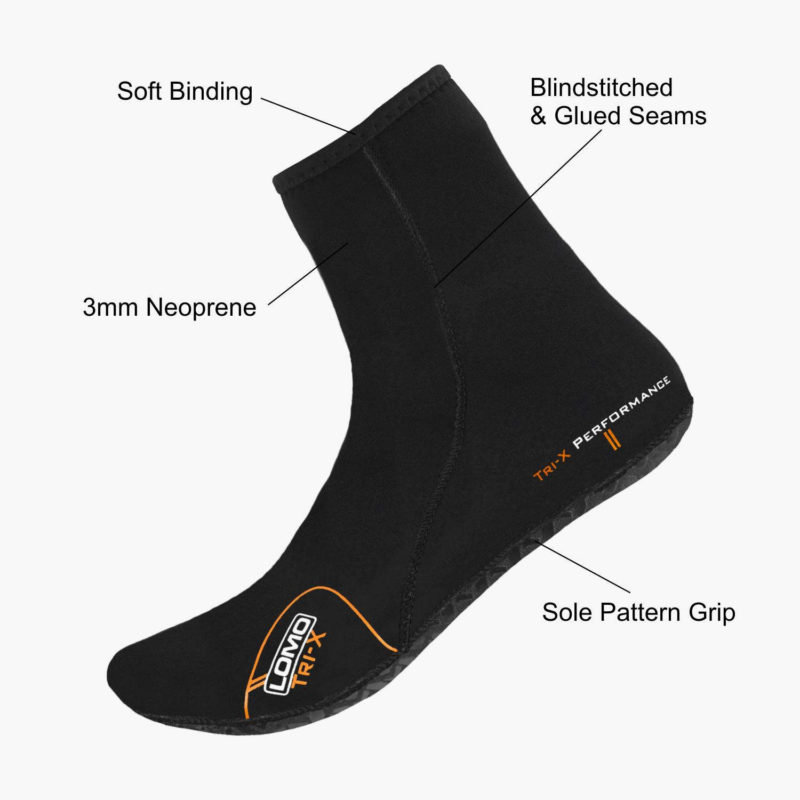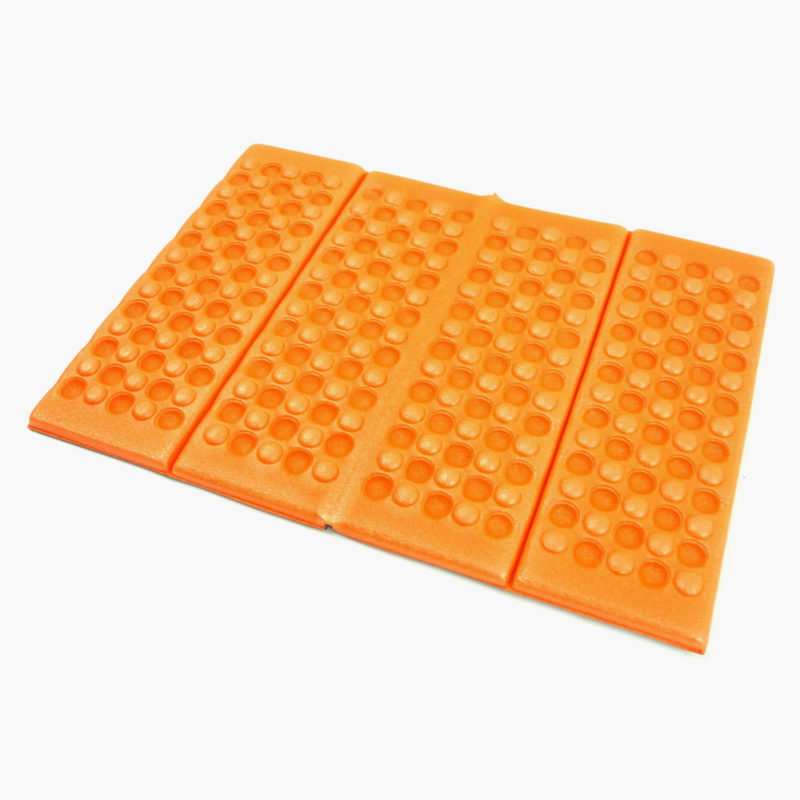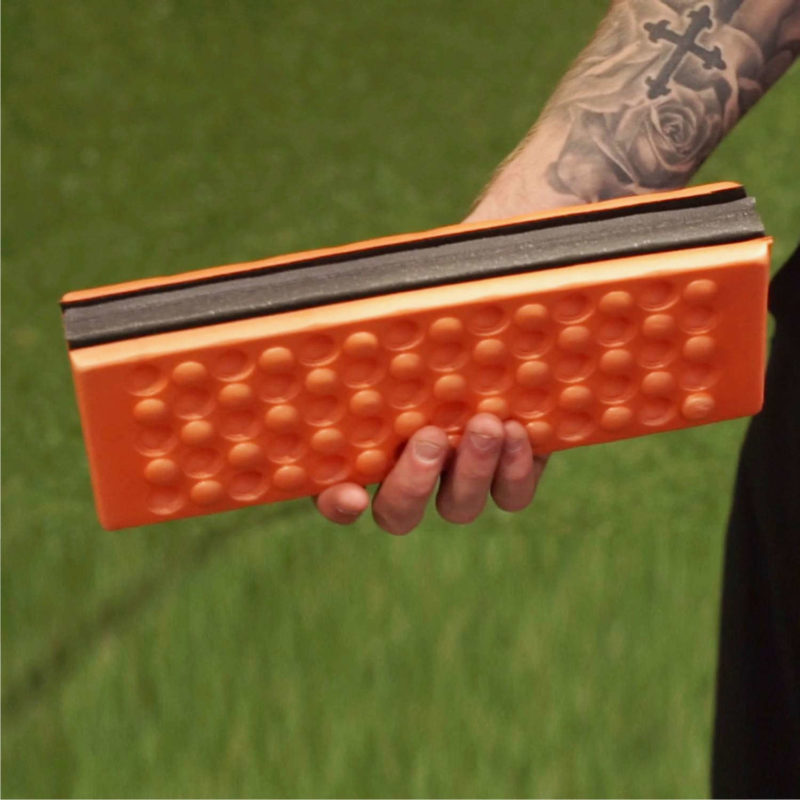How Wetsuits Work
Wetsuits help to keep you warm by working in several different ways.
But firstly lets dispel a common myth by making it clear that it's not the water that enters a wetsuit that keeps you warm. Indeed a wetsuit would be warmer if no water entered it at all, but then it would be a drysuit; an entirely different piece of equipment.
Wetsuit Fit
A wetsuit should be a tight fitting garment which should be gently squeezing you all over. When you enter the water a very thin layer of water will squeeze between the wetsuit and your skin. If the wetsuit is baggy then a whole lot of water will flood in to fill the gaps between the wetsuit and your body. In both of the previous situations the cold water entering your body will have an instant cooling effect on your body.
Now lets take the first scenario; the tight fitting wetsuit: Here the thin layer of cold water that has squeezed into the suit is warmed up by your body heat. Because there's not a lot of water it doesn't take long to warm up and doesn't rob your body of a huge amount of heat. When you move about in the water, fresh water from outside is largely prevented from entering the suit as the suit is already 'full'. Having a good fit at the ankles, wrists and neck of the suit will help this resistance to fresh water entry, or 'flushing' as it is known.
In the second scenario, that of a baggy wetsuit, much more water will be inside the suit to begin with. Your body will take much longer to warm it up and the process will rob your body of much more heat. In fact your body may never be able to warm the water up significantly. When you are immersed in water and start to move around fresh water from outside easily flushes through the suit and displaces or dilutes the water that your body worked so hard to warm up. This constant flushing of cold water will make it impossible to maintain much body heat and will reduce the effectiveness of the wetsuit hugely.
So the first thing about wetsuits to understand is that a tight fitting wetsuit is critical to staying warm and a baggy wetsuit is unlikely to keep you warm. In fact it is fair to say that a well fitted thin wetsuit will probably be warmer than a baggy thick wetsuit.
Now lets take the first scenario; the tight fitting wetsuit: Here the thin layer of cold water that has squeezed into the suit is warmed up by your body heat. Because there's not a lot of water it doesn't take long to warm up and doesn't rob your body of a huge amount of heat. When you move about in the water, fresh water from outside is largely prevented from entering the suit as the suit is already 'full'. Having a good fit at the ankles, wrists and neck of the suit will help this resistance to fresh water entry, or 'flushing' as it is known.
In the second scenario, that of a baggy wetsuit, much more water will be inside the suit to begin with. Your body will take much longer to warm it up and the process will rob your body of much more heat. In fact your body may never be able to warm the water up significantly. When you are immersed in water and start to move around fresh water from outside easily flushes through the suit and displaces or dilutes the water that your body worked so hard to warm up. This constant flushing of cold water will make it impossible to maintain much body heat and will reduce the effectiveness of the wetsuit hugely.
So the first thing about wetsuits to understand is that a tight fitting wetsuit is critical to staying warm and a baggy wetsuit is unlikely to keep you warm. In fact it is fair to say that a well fitted thin wetsuit will probably be warmer than a baggy thick wetsuit.
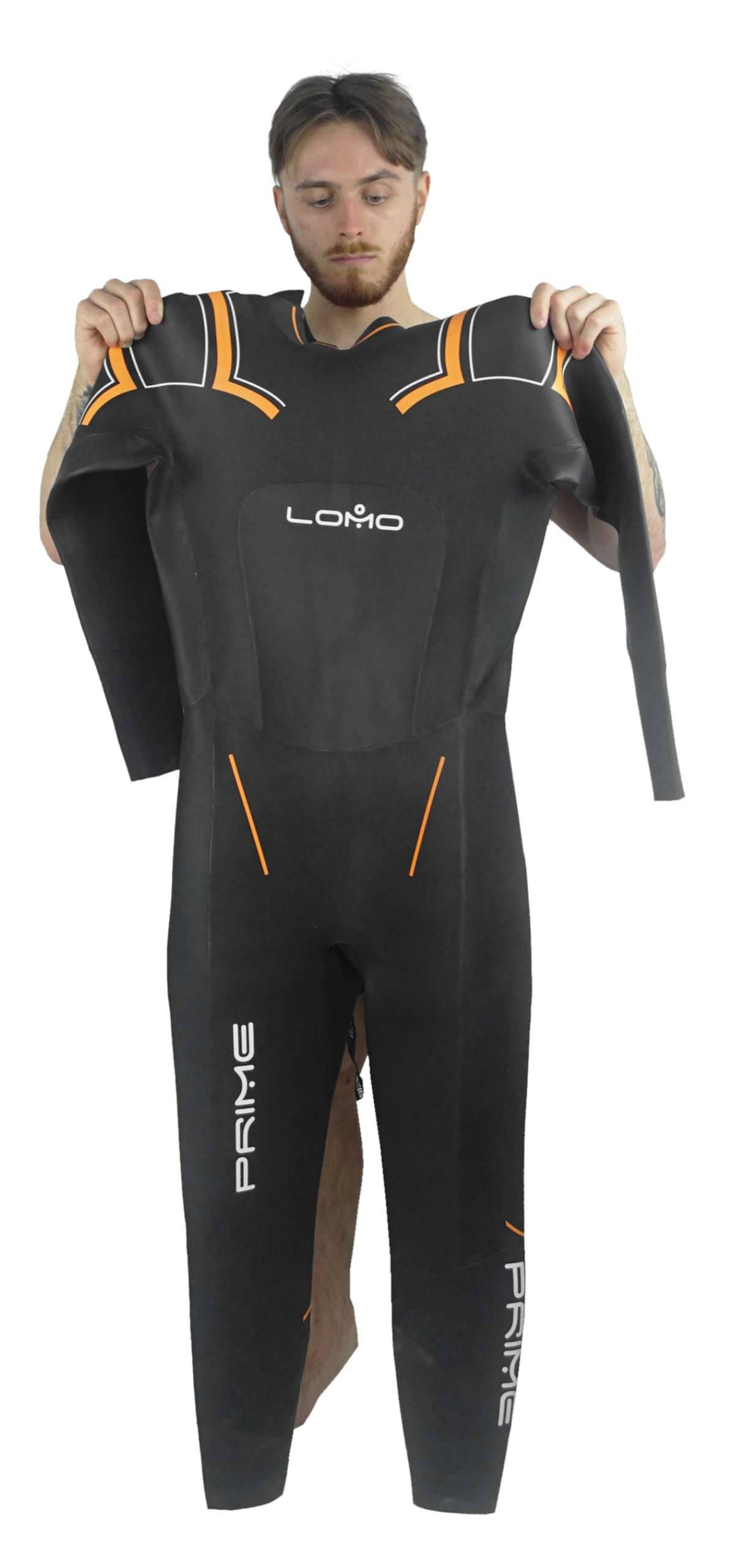
Wetsuit Insulation
So now we have a well fitted wetsuit and your body has warmed up the water that is in it. Both your body and the thin film of water around it are pressed hard up against a thin layer of neoprene. On the other side of the neoprene is icy cold water. Now whilst neoprene will insulate you from this cold water it is not 100% efficient insulator and some of your body heat (and the heat contained in the thin layer of water around you) will pass through the neoprene and attempt to warm the water outside. As this happens it cools down, and you in turn cool down. So there is constant heat loss through the material if the water outside is cold.
This is where thickness comes into play. Thicker neoprene will lose less heat through it that thin neoprene so in simple terms a 5mm wetsuit will be warmer than a 3mm wetsuit of the same fit as less heat is lost through the material as your warmth is better insulated from the outer cold.
This is where thickness comes into play. Thicker neoprene will lose less heat through it that thin neoprene so in simple terms a 5mm wetsuit will be warmer than a 3mm wetsuit of the same fit as less heat is lost through the material as your warmth is better insulated from the outer cold.
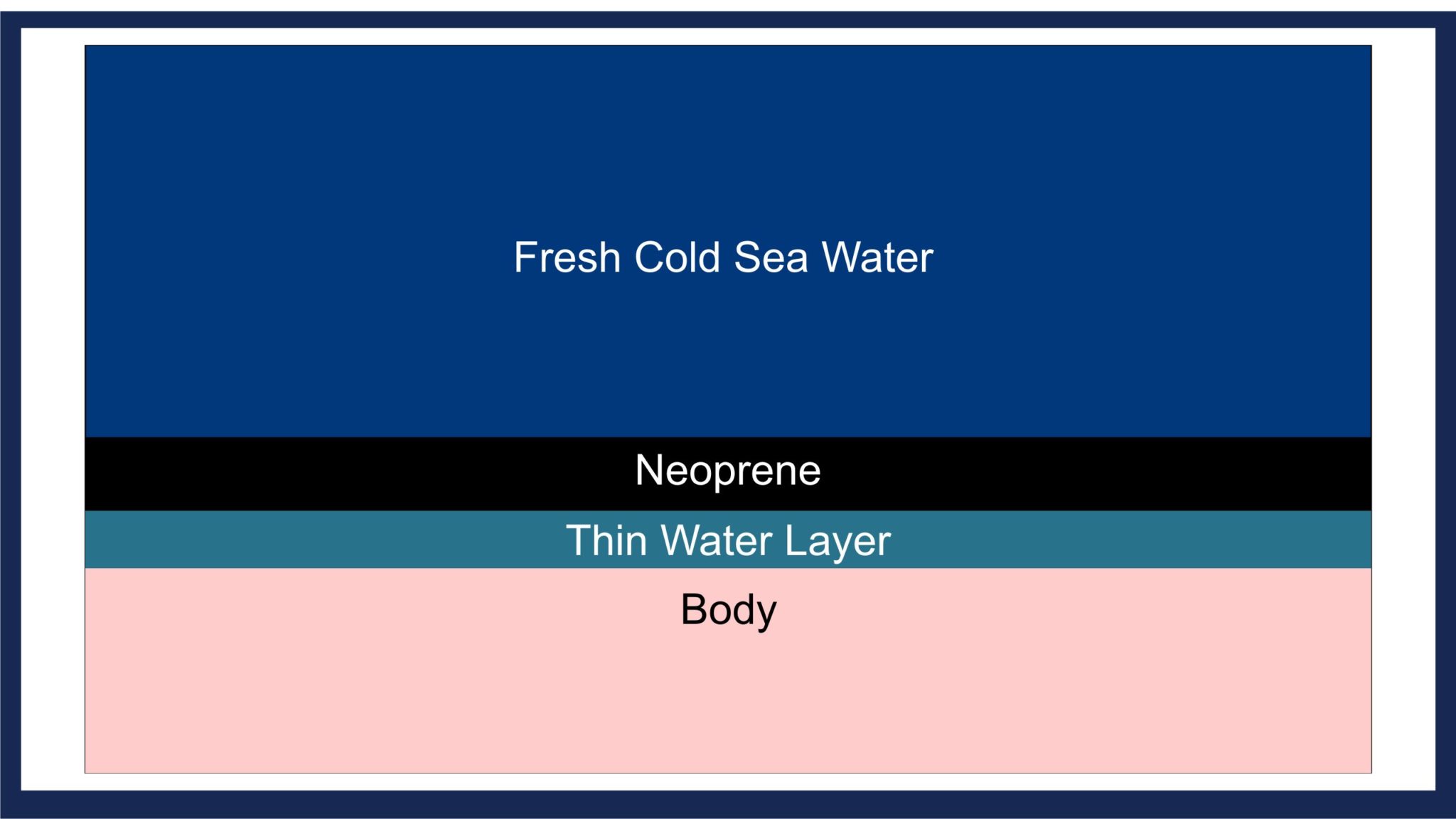
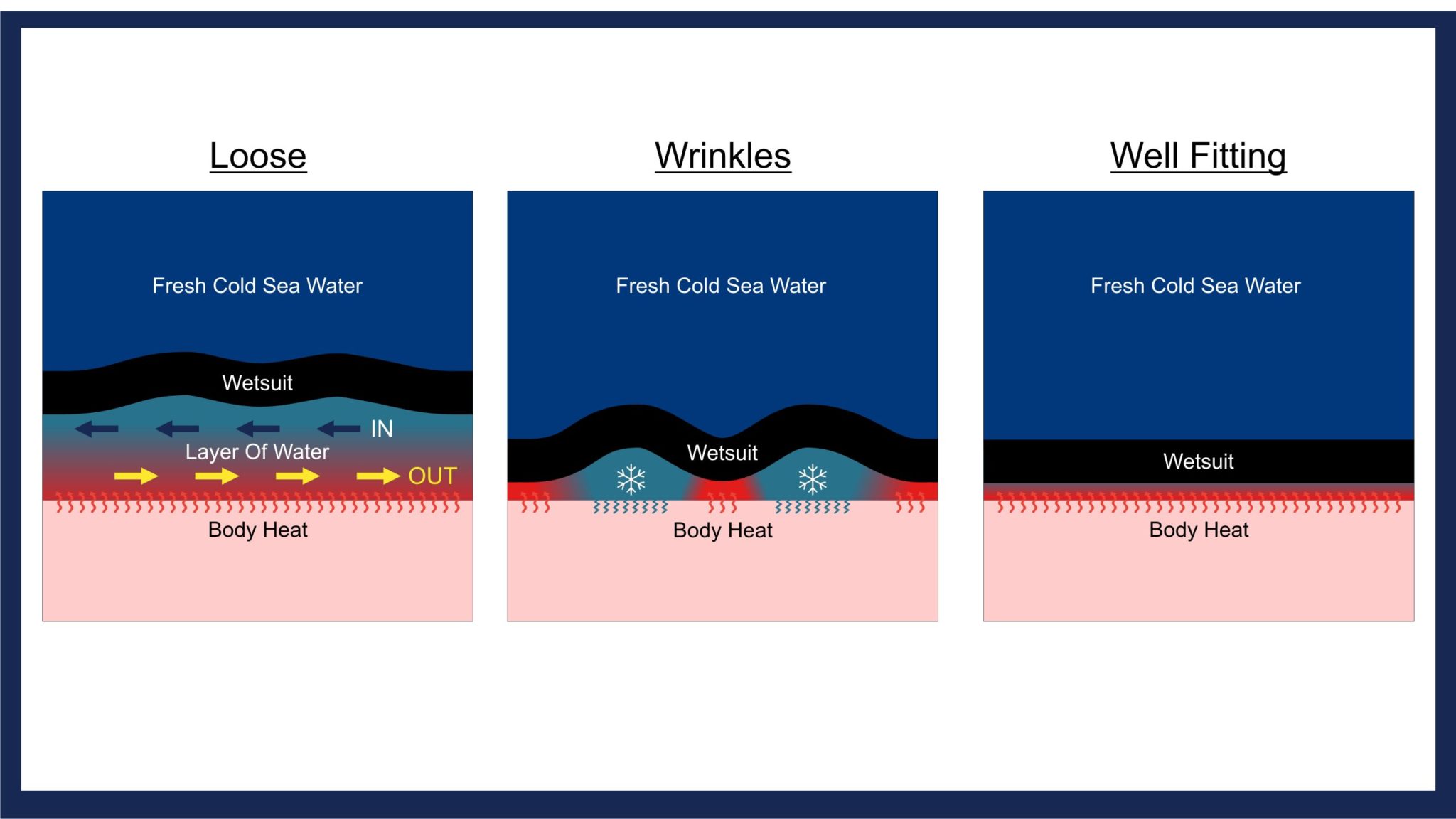
Radiation
If you have ever felt the warmth of the sun on an otherwise cold day you'll know what radiant heat is. It is heat in the form of infra red energy. The sun emits it, the bars on an electric fire emit it , even light bulbs emit it….. and so does our body. Space blankets handed out at race events etc claim to reflect this radiant body heat back towards your body and thus keep you warm.
Some wetsuits have a titanium lining, which is a silvery material with a degree of reflecting ability. We have seen allsorts of claims about what this material does. Some manufacturers claim that the titanium lining can reflect cold! A claim that would change the laws of physics as cold in itself does not exist; cold is merely the absence of heat and you cant reflect something that doesn't exist. Many wetsuit diagrams will show the body's heat being reflected back towards itself by this material and the graphics certainly look impressive. However in our tests, the benefits of having a titanium lining for the purposes of reflecting the body's heat back towards itself are negligible. Firstly the titanium is not an efficient reflector. Secondly it is normally placed behind the nylon lining of the wetsuit thus blocking its ability to reflect anything. Thirdly, when your body's radiant heat hits the back interior of the wetsuit, it heats it up as black is a poor reflector. Thus the heat emitting from your body is not all lost, some of it heats up the inner surface of the wetsuit when then touches your body. Thus without a reflector some of this heat is retained anyway. Finally, not a lot of the total amount of body heat loss in these conditions is through radiant heat and a very little of this is recoverable through titanium reflection. On materials that are not coated with nylon on the inside, the titanium lining can make for quit a comfortable finish next to the skin and offer it the best chance to reflect some of the heat back but not many products have this.
So to sum up our opinion on titanium lining, it doesn't do any harm, but the benefits of it are totally over hyped by many manufacturers from a heat reflection standpoint. We wouldn't advise someone to make it a significant part of their buying criteria as we have not found any sizeable thermal benefit from incorporating it in our suits.
Some wetsuits have a titanium lining, which is a silvery material with a degree of reflecting ability. We have seen allsorts of claims about what this material does. Some manufacturers claim that the titanium lining can reflect cold! A claim that would change the laws of physics as cold in itself does not exist; cold is merely the absence of heat and you cant reflect something that doesn't exist. Many wetsuit diagrams will show the body's heat being reflected back towards itself by this material and the graphics certainly look impressive. However in our tests, the benefits of having a titanium lining for the purposes of reflecting the body's heat back towards itself are negligible. Firstly the titanium is not an efficient reflector. Secondly it is normally placed behind the nylon lining of the wetsuit thus blocking its ability to reflect anything. Thirdly, when your body's radiant heat hits the back interior of the wetsuit, it heats it up as black is a poor reflector. Thus the heat emitting from your body is not all lost, some of it heats up the inner surface of the wetsuit when then touches your body. Thus without a reflector some of this heat is retained anyway. Finally, not a lot of the total amount of body heat loss in these conditions is through radiant heat and a very little of this is recoverable through titanium reflection. On materials that are not coated with nylon on the inside, the titanium lining can make for quit a comfortable finish next to the skin and offer it the best chance to reflect some of the heat back but not many products have this.
So to sum up our opinion on titanium lining, it doesn't do any harm, but the benefits of it are totally over hyped by many manufacturers from a heat reflection standpoint. We wouldn't advise someone to make it a significant part of their buying criteria as we have not found any sizeable thermal benefit from incorporating it in our suits.
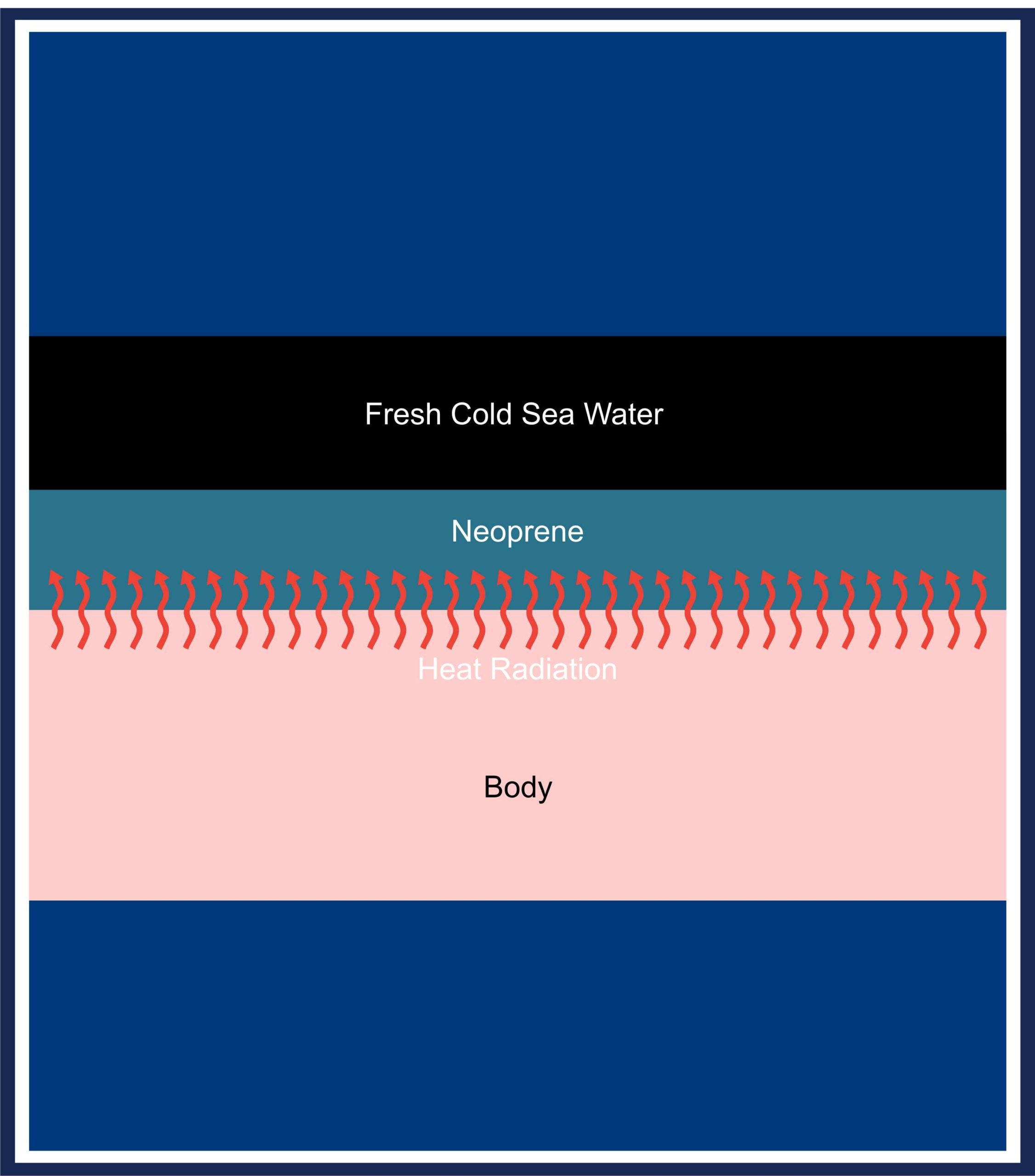
Wetsuit Construction
We have talked about flushing and about trying to keep the water out at the ankles, wrists and neck. But water can also come in at other places. Seams and zips are next to come under the spotlight.
A small amount of water will seep through many types of stitching and through the seams where the material comes together. This is not a flood of water and for some types of suit this is acceptable. Summer 3mm wetsuits for example have flatlock stitching that allows such a slow seepage. However, for a summer wetsuit this is perfectly acceptable. The suit is more than efficient enough, even with a small amount of seepage, to keep the user warm in cool summer waters.
In winter conditions we need to try a bit harder to keep every last bit of heat inside the suit so we try to stop water seepage at the seams in several ways. Different manufacturers may use different methods and we will try to cover all of these even if we ourselves do not use them.
Blind stitching is a method of stitching where the needle and thread does not go all the way through to the other side and therefore there is no needle hole for water to go through. This is a very popular and effective method in reducing seepage. Firstly the panels of the wetsuit would be glued together to stop water getting through at the panel edges, then the panels are blind stitched from both sides. This method of construction is called "Glued and double blind stitched" and works very well.
Some manufacturers use tape on the inside of the seams instead of gluing (Or in addition to gluing). Taping the seams can also reduce the amount of water seeping in. Finally, a more recent development is the creation of 'liquid seams'. These are not as technical as they may sound. Effectively a liquid seam is a rubber liquid applied with a large 'glue gun' to the inside of the wetsuit seam. It is another very effective way to reduce the amount of water entering a suit.
A small amount of water will seep through many types of stitching and through the seams where the material comes together. This is not a flood of water and for some types of suit this is acceptable. Summer 3mm wetsuits for example have flatlock stitching that allows such a slow seepage. However, for a summer wetsuit this is perfectly acceptable. The suit is more than efficient enough, even with a small amount of seepage, to keep the user warm in cool summer waters.
In winter conditions we need to try a bit harder to keep every last bit of heat inside the suit so we try to stop water seepage at the seams in several ways. Different manufacturers may use different methods and we will try to cover all of these even if we ourselves do not use them.
Blind stitching is a method of stitching where the needle and thread does not go all the way through to the other side and therefore there is no needle hole for water to go through. This is a very popular and effective method in reducing seepage. Firstly the panels of the wetsuit would be glued together to stop water getting through at the panel edges, then the panels are blind stitched from both sides. This method of construction is called "Glued and double blind stitched" and works very well.
Some manufacturers use tape on the inside of the seams instead of gluing (Or in addition to gluing). Taping the seams can also reduce the amount of water seeping in. Finally, a more recent development is the creation of 'liquid seams'. These are not as technical as they may sound. Effectively a liquid seam is a rubber liquid applied with a large 'glue gun' to the inside of the wetsuit seam. It is another very effective way to reduce the amount of water entering a suit.
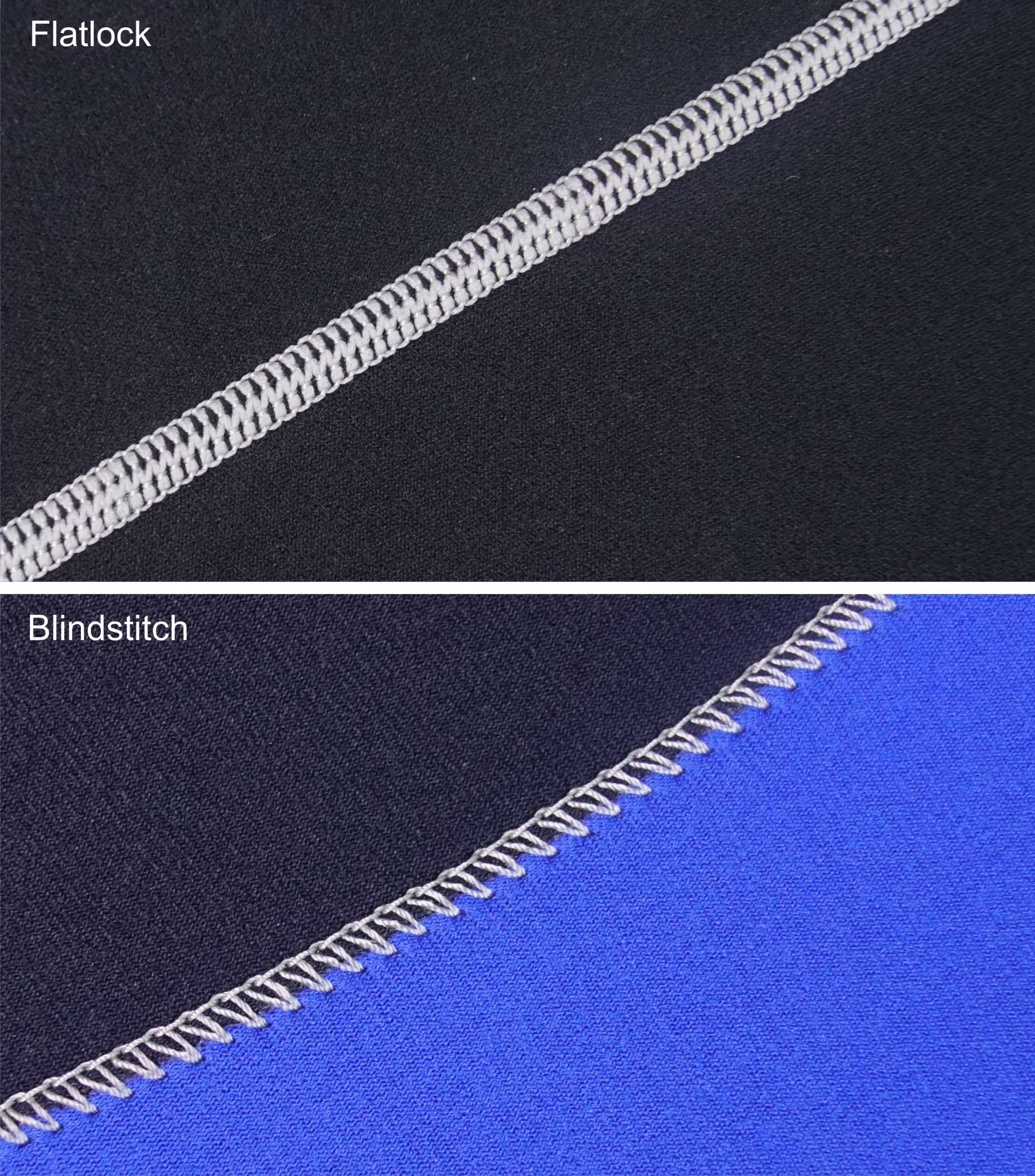
Wetsuit Zips
We have talked about flushing and about trying to keep the water out at the ankles, wrists and neck. But water can also come in at other places. Seams and zips are next to come under the spotlight.
Some wetsuits have dryzips (like those found on drysuit) in place of the regular zip to eliminate any water ingress through the zip. The inclusion of a dryzip can almost double the cost of a wetsuit and is, in our opinion, an over the top addition to most suits that is unnecessary.
A more cost effective way to reduce water ingression through the zip is to include a zip baffle or 'batwing' this is an extra piece of material that sits behind the zip and traps any water that goes though the zip.
Some wetsuits have dryzips (like those found on drysuit) in place of the regular zip to eliminate any water ingress through the zip. The inclusion of a dryzip can almost double the cost of a wetsuit and is, in our opinion, an over the top addition to most suits that is unnecessary.
A more cost effective way to reduce water ingression through the zip is to include a zip baffle or 'batwing' this is an extra piece of material that sits behind the zip and traps any water that goes though the zip.
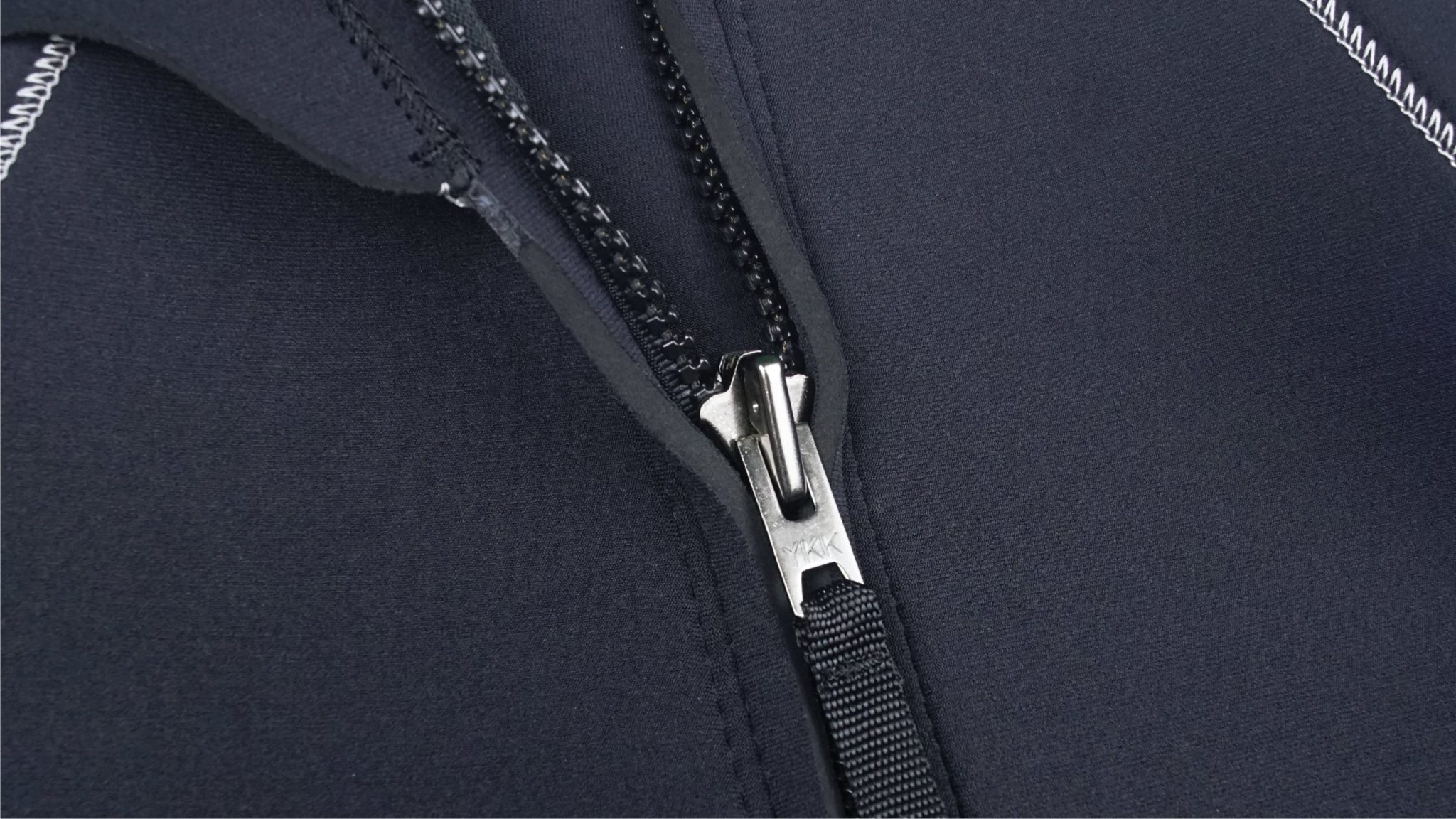
Surface Coating
Most wetsuits are made from what is termed "Double lined neoprene". This means that the neoprene rubber is laminated to a fabric , normally stretch nylon, to give it added durability and to allow it to be stitched together.
This fabric is mainly advantageous to the functionality, construction and design of a wetsuit. However, when used in sports where the user is above the water, as opposed to in the water (Such as surfing) then the wearer can experience something call 'evaporative cooling'. This phenomenon is where the outer nylon skin of the wetsuit holds a thin layer of water on it which is heated up by the small amount of heat that has escaped through the neoprene material. If you are in a strong cold wind, this layer of water is then blown/evaporated away, taking your heat with it. Its probably best explained by blowing the back of your hand, noticing how cold it feels, then wet the back of your hand and blow again, it feels cooler! That is evaporative cooling. This effect can be slightly reduced by using smoothskin neoprene on the worst areas such as the chest panel. Smoothskin (or single lined neoprene)neoprene is essentially neoprene rubber with nylon laminated to one side of it with the other side bare and given a smooth finish. This smooth surface holds less surface water (Not no surface water) and thus is less prone to evaporative cooling. But this part of the suit is not as tough as the rest of the suit. Some manufacturers put this material on the chest panel area only, as this area is most at risk from heat loss.
The benefits of having smoothskin chest panels to alleviate evaporative cooling are, in our opinion, exaggerated. The effect is reduced, there is no doubt, but very few people actually benefit from it. Firstly, if your sport is mainly in the water then you don't have evaporative cooling (EG Diving, snorkelling, triathlon, swimming etc). Secondly, most above water sports are used with a buoyancy aid which covers your chest and core area thus protecting it from the wind and therefore stopping most evaporative cooling (sailing, windsurfing, kite surfing, kayaking, waterskiing, wakeboarding, canoeing all use buoyancy aids). This really only leaves surfers as people whose sport is above the water but don't use a buoyancy aid. Surfers however spend more of the time in the water than riding their board so again, the benefits are reduced.
So to sum up on the benefits of smoothskin chest panels, there are some, and they are a bit warmer when wet and exposed to the wind, but for most uses there is very little difference.
Finemesh neoprene is a variation on smoothskin where the bare rubber is finished differently and takes on a slightly more durable, textured finish. Like smoothskin neoprnene, finemesh holds less surface water than double lined neoprene.
This fabric is mainly advantageous to the functionality, construction and design of a wetsuit. However, when used in sports where the user is above the water, as opposed to in the water (Such as surfing) then the wearer can experience something call 'evaporative cooling'. This phenomenon is where the outer nylon skin of the wetsuit holds a thin layer of water on it which is heated up by the small amount of heat that has escaped through the neoprene material. If you are in a strong cold wind, this layer of water is then blown/evaporated away, taking your heat with it. Its probably best explained by blowing the back of your hand, noticing how cold it feels, then wet the back of your hand and blow again, it feels cooler! That is evaporative cooling. This effect can be slightly reduced by using smoothskin neoprene on the worst areas such as the chest panel. Smoothskin (or single lined neoprene)neoprene is essentially neoprene rubber with nylon laminated to one side of it with the other side bare and given a smooth finish. This smooth surface holds less surface water (Not no surface water) and thus is less prone to evaporative cooling. But this part of the suit is not as tough as the rest of the suit. Some manufacturers put this material on the chest panel area only, as this area is most at risk from heat loss.
The benefits of having smoothskin chest panels to alleviate evaporative cooling are, in our opinion, exaggerated. The effect is reduced, there is no doubt, but very few people actually benefit from it. Firstly, if your sport is mainly in the water then you don't have evaporative cooling (EG Diving, snorkelling, triathlon, swimming etc). Secondly, most above water sports are used with a buoyancy aid which covers your chest and core area thus protecting it from the wind and therefore stopping most evaporative cooling (sailing, windsurfing, kite surfing, kayaking, waterskiing, wakeboarding, canoeing all use buoyancy aids). This really only leaves surfers as people whose sport is above the water but don't use a buoyancy aid. Surfers however spend more of the time in the water than riding their board so again, the benefits are reduced.
So to sum up on the benefits of smoothskin chest panels, there are some, and they are a bit warmer when wet and exposed to the wind, but for most uses there is very little difference.
Finemesh neoprene is a variation on smoothskin where the bare rubber is finished differently and takes on a slightly more durable, textured finish. Like smoothskin neoprnene, finemesh holds less surface water than double lined neoprene.
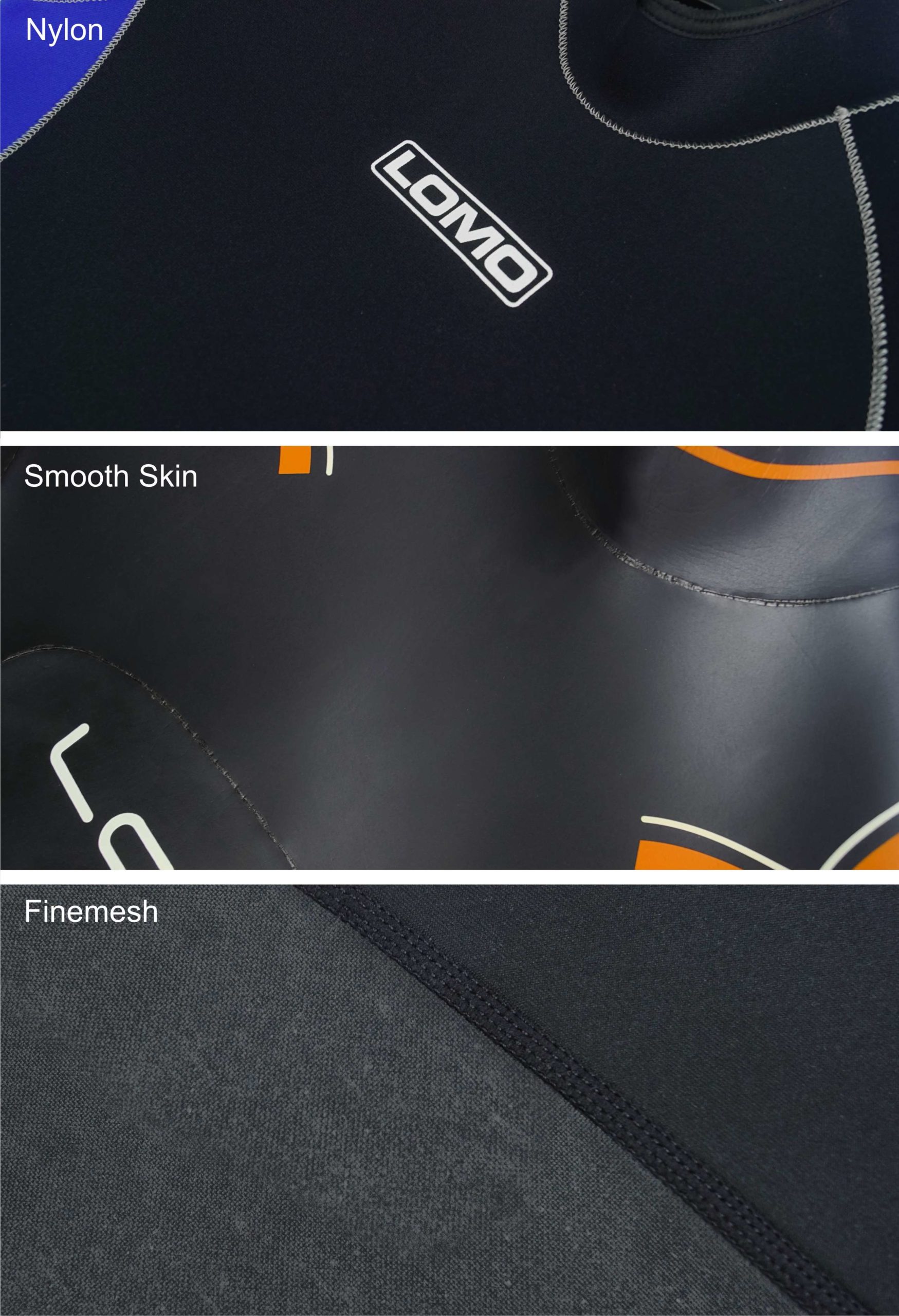
Triathlon Wetsuits
Triathlon wetsuits are usually completely made from smoothskin neoprene. This is not for warmth and is not to avoid evaporative cooling. Triathlon wetsuits are made from smoothskin neoprene to reduce friction in the water. A smoothskin wetsuit will slip through the water slightly easier than a nylon surfaced wetsuit. Most people will not notice the difference at first but after a mile long swim your times will probably be slightly less in a smoothskin wetsuit.
Triathlon wetsuits are also designed to have high flexibility and often use grades of neoprene and nylon that are more flexible that standard grades. Triathletes also benefit from the inherent buoyancy of neoprene as this allows the body to float slightly higher in the water thus reducing the amount of your body that is actually dragging through the water itself.
Triathlon wetsuits are also designed to have high flexibility and often use grades of neoprene and nylon that are more flexible that standard grades. Triathletes also benefit from the inherent buoyancy of neoprene as this allows the body to float slightly higher in the water thus reducing the amount of your body that is actually dragging through the water itself.
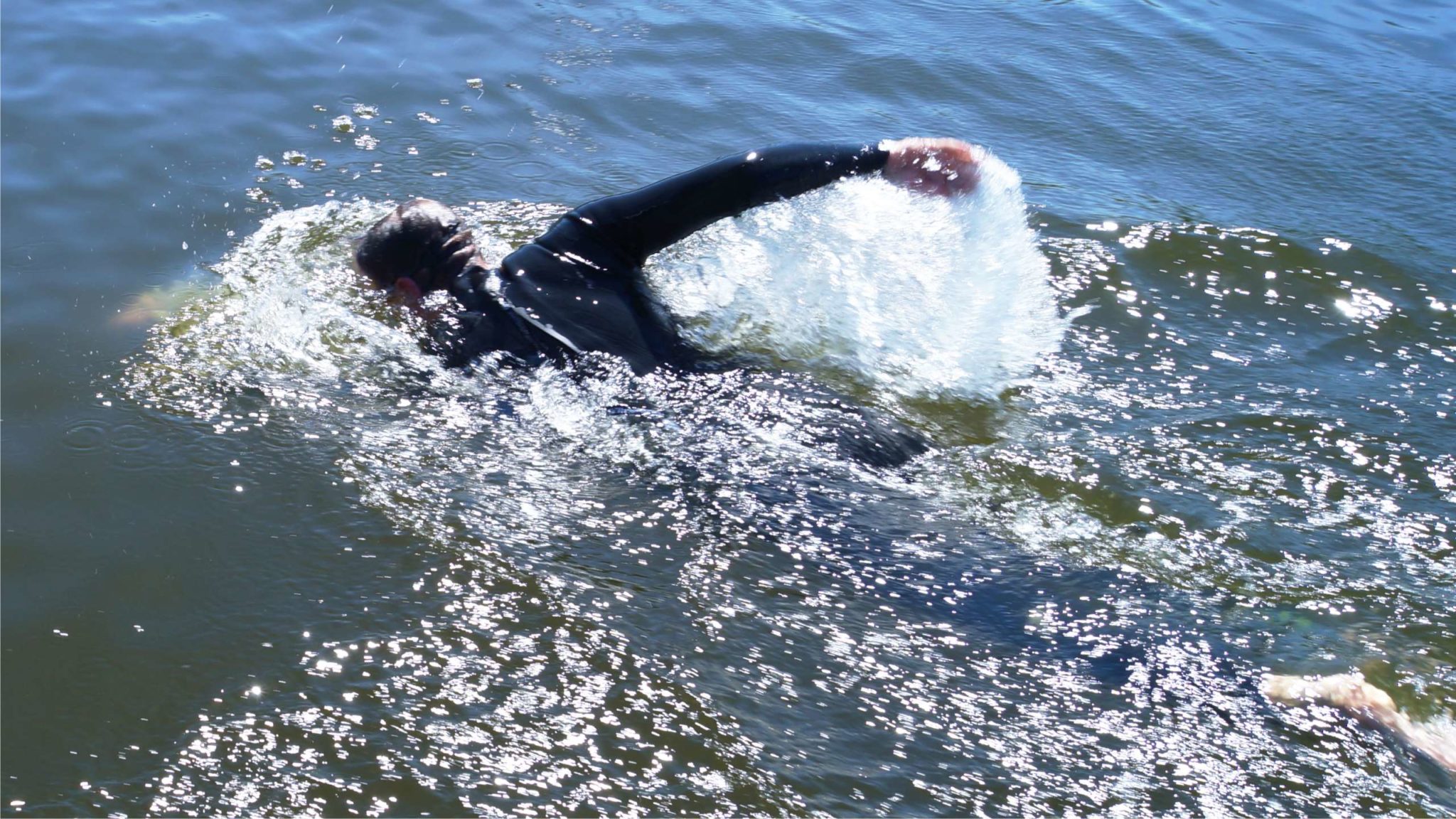
Licence to use this document
Licence to use this document. We often receive requests to use excerpts from our guides on other websites. We are happy for you to do this as long as you abide by the following condition. You must attribute the article to Lomo Watersport and include a link to our website www.lomo.co.uk at the bottom of every page containing the excerpt. The copyright of this document remains the property of Lomo Watersport
OUR PRODUCTS
We have a great range of price beating products in our Glasgow wetsuits store.
Load more products
Loading...
